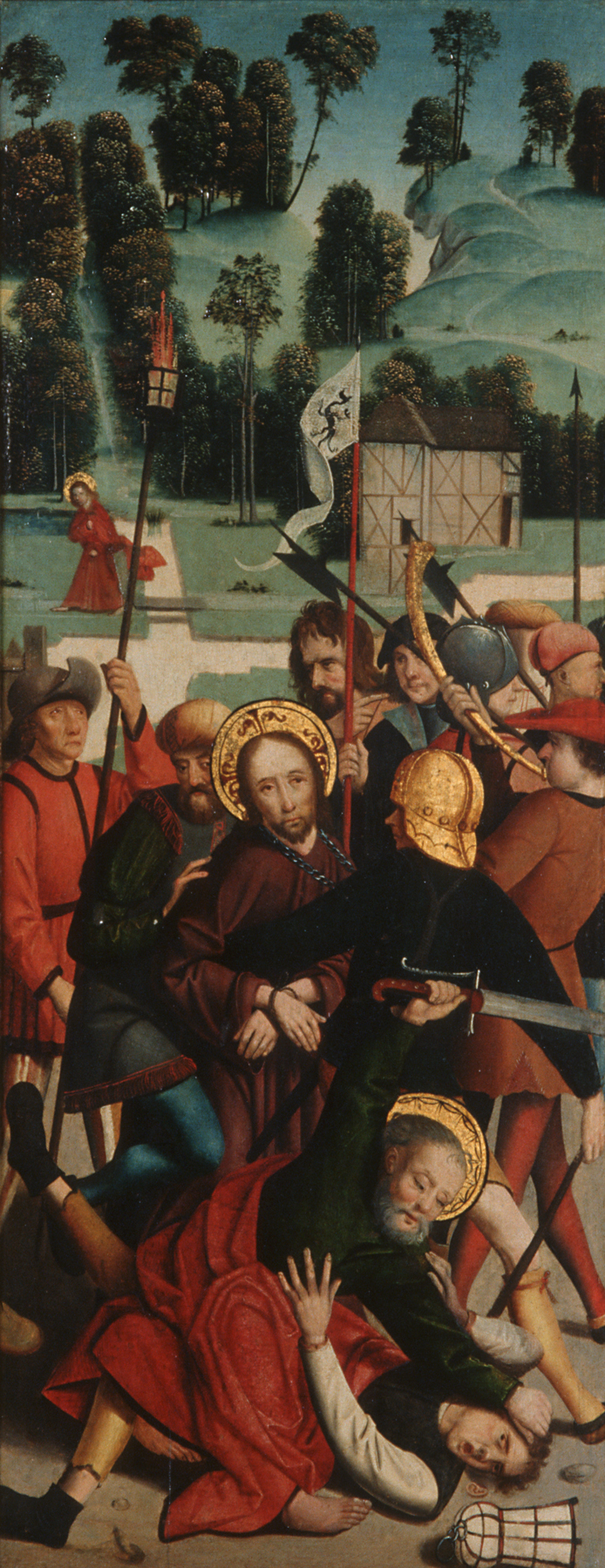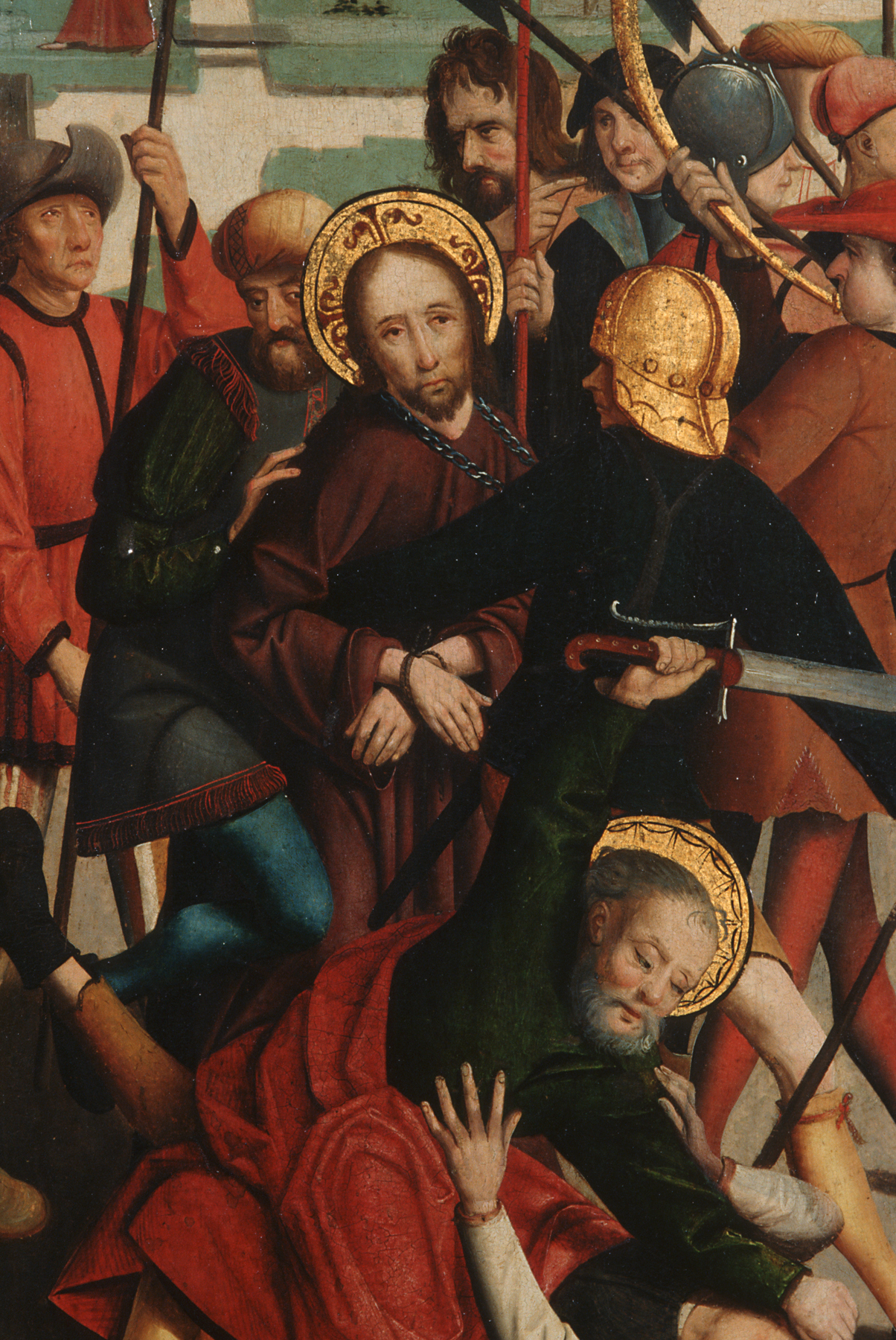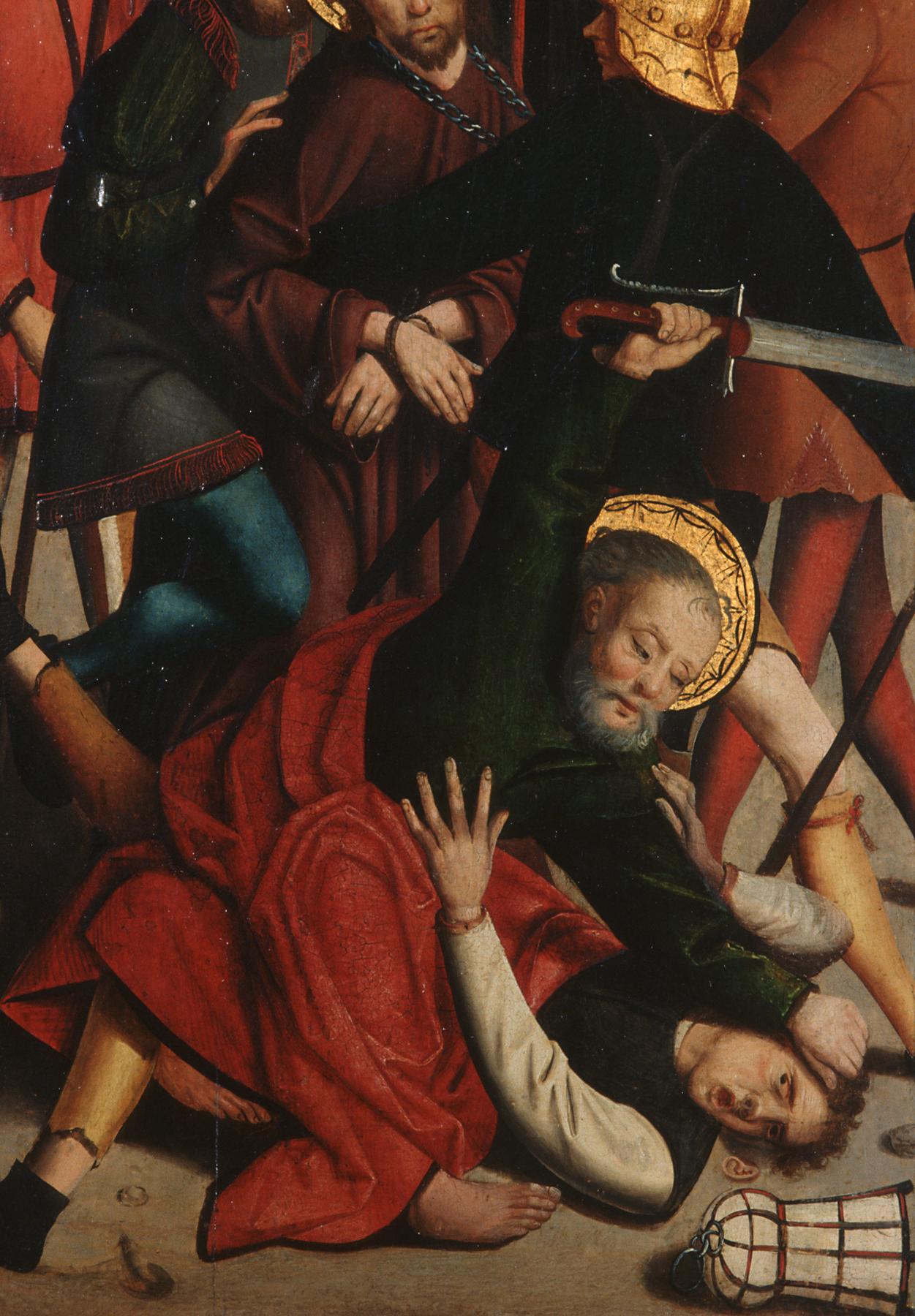The Arrest of Christ, Master of Alkmaar; Claas van Waterlant
Artwork Overview
Master of Alkmaar, artist
likely active circa 1475–1515
Claas van Waterlant, artist
active circa 1481–1533
The Arrest of Christ,
1490–circa 1510
Where object was made: Haarlem, Habsburg Netherlands (present-day Netherlands)
Material/technique: panel; oil
Dimensions:
Canvas/Support (Height x Width x Depth): 60.3 x 26 cm
Canvas/Support (Height x Width x Depth): 23 3/4 x 10 1/4 in
Canvas/Support (Height x Width x Depth): 60.3 x 26 cm
Canvas/Support (Height x Width x Depth): 23 3/4 x 10 1/4 in
Credit line: Gift of the Mark L. Morris Jr. Family
Accession number: 1992.0037
Not on display
If you wish to reproduce this image, please submit an image request



